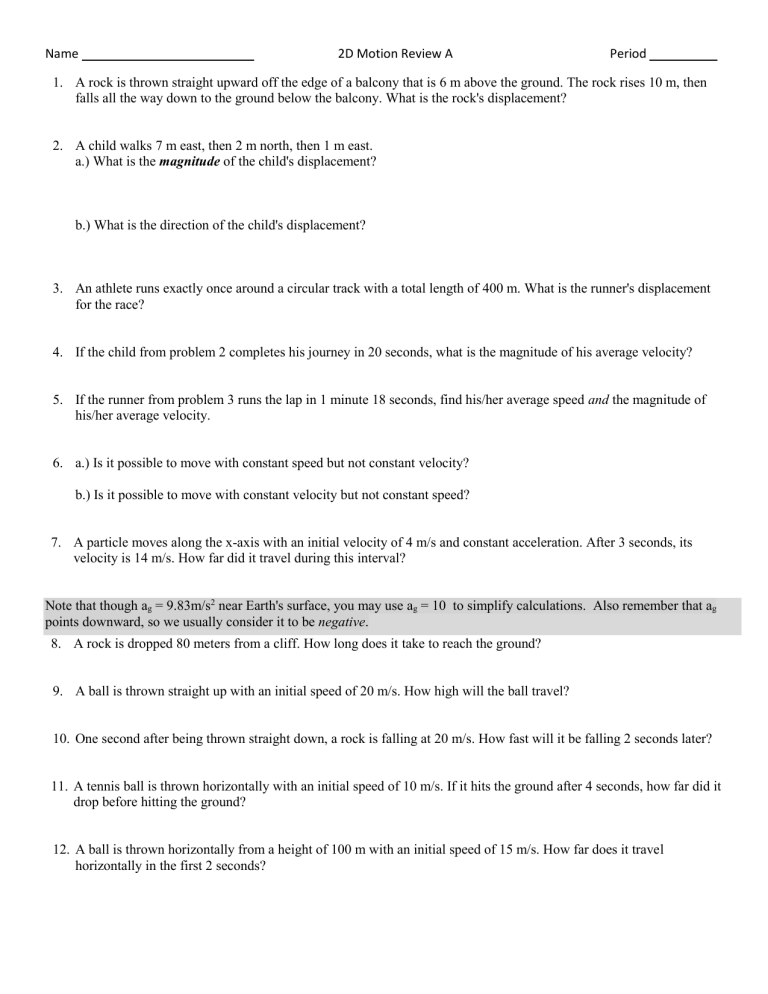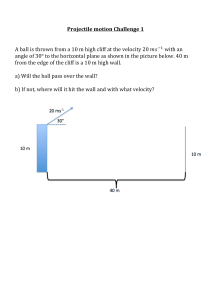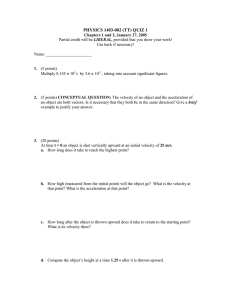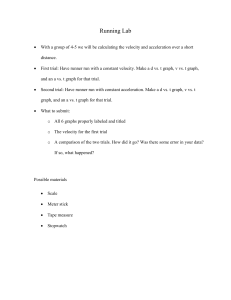
Name 2D Motion Review A Period 1. A rock is thrown straight upward off the edge of a balcony that is 6 m above the ground. The rock rises 10 m, then falls all the way down to the ground below the balcony. What is the rock's displacement? 2. A child walks 7 m east, then 2 m north, then 1 m east. a.) What is the magnitude of the child's displacement? b.) What is the direction of the child's displacement? 3. An athlete runs exactly once around a circular track with a total length of 400 m. What is the runner's displacement for the race? 4. If the child from problem 2 completes his journey in 20 seconds, what is the magnitude of his average velocity? 5. If the runner from problem 3 runs the lap in 1 minute 18 seconds, find his/her average speed and the magnitude of his/her average velocity. 6. a.) Is it possible to move with constant speed but not constant velocity? b.) Is it possible to move with constant velocity but not constant speed? 7. A particle moves along the x-axis with an initial velocity of 4 m/s and constant acceleration. After 3 seconds, its velocity is 14 m/s. How far did it travel during this interval? Note that though ag = 9.83m/s2 near Earth's surface, you may use ag = 10 to simplify calculations. Also remember that ag points downward, so we usually consider it to be negative. 8. A rock is dropped 80 meters from a cliff. How long does it take to reach the ground? 9. A ball is thrown straight up with an initial speed of 20 m/s. How high will the ball travel? 10. One second after being thrown straight down, a rock is falling at 20 m/s. How fast will it be falling 2 seconds later? 11. A tennis ball is thrown horizontally with an initial speed of 10 m/s. If it hits the ground after 4 seconds, how far did it drop before hitting the ground? 12. A ball is thrown horizontally from a height of 100 m with an initial speed of 15 m/s. How far does it travel horizontally in the first 2 seconds? 13. A javelin travels in a parabolic arc for 6 seconds before hitting the ground. Compare its horizontal velocity 1 second after being thrown to its horizontal velocity 4 seconds after being thrown. 14. An object's position during a 10 second time interval is shown by the graph below: a.) Determine the object's total distance traveled and displacement. b.) What is the object's velocity at the following times: t = 1, t = 3, and t = 6. c.) What is the object's acceleration at t = 5? 15. An object's velocity during a 10 second time interval is shown by the graph below: a.) Determine the object's total distance traveled and displacement. b.) What is the object's acceleration at the following times: t = 1, t = 3, and t = 6. 16. An object's position during a given time interval is shown by the graph below: a.) At which of the marked points is the object's velocity the greatest? The least? b.) Is the object's acceleration positive or negative between points A and B?




